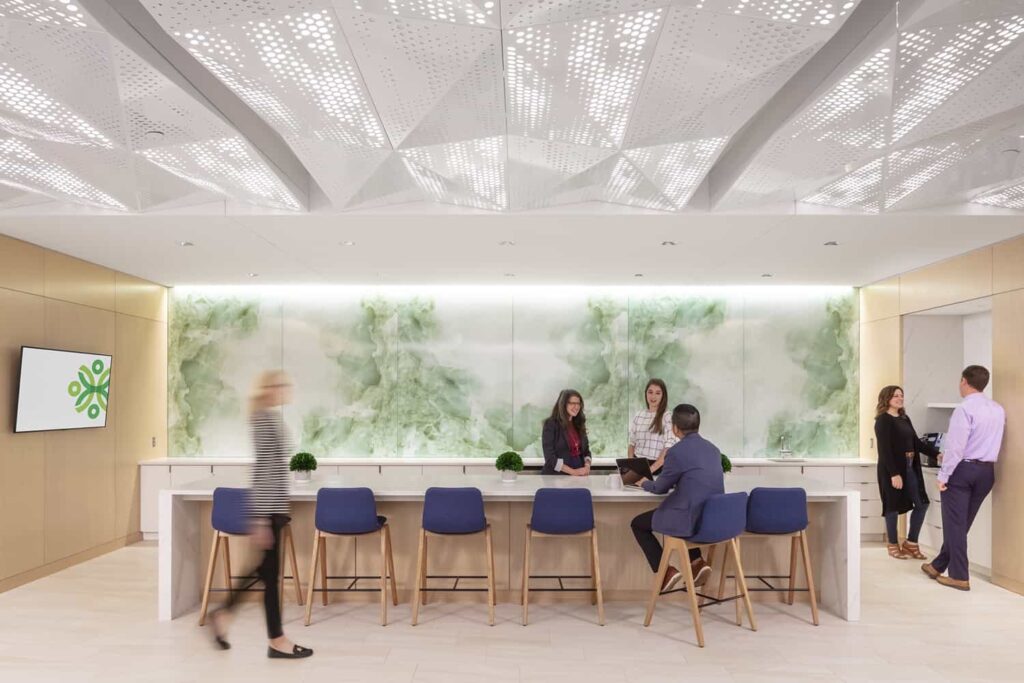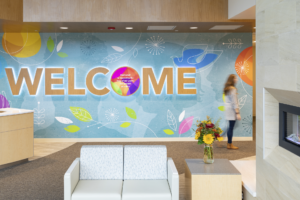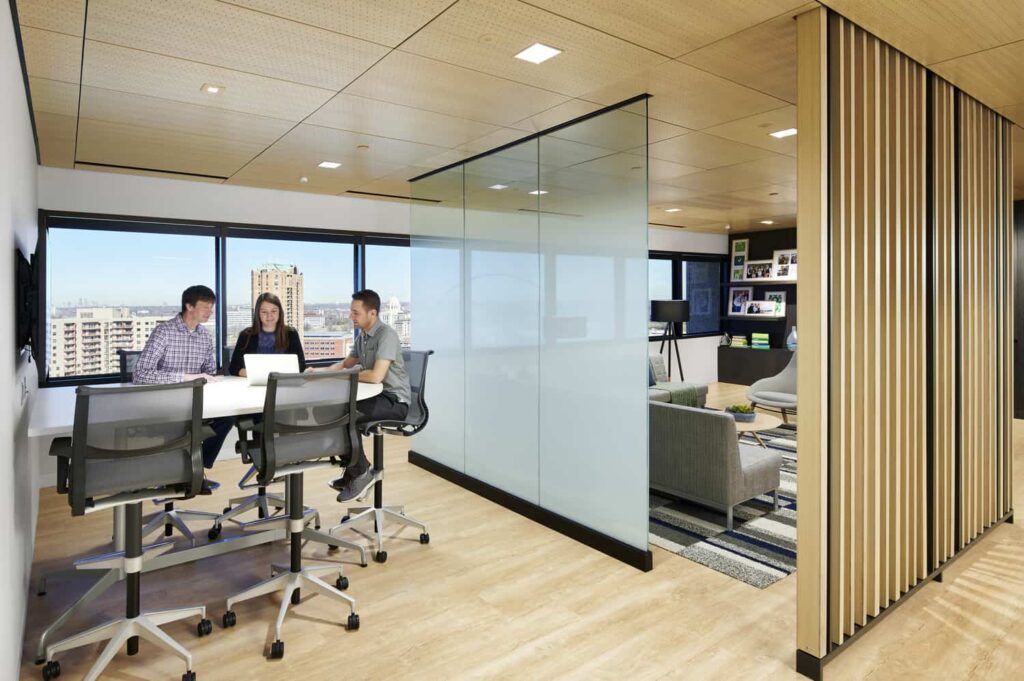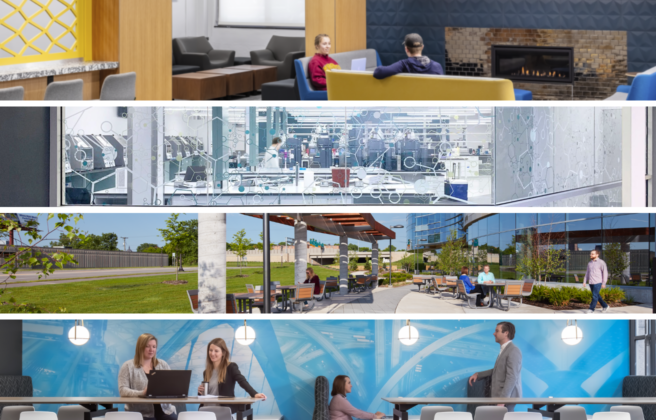The debate is not new. However, the past year changed the narrative around where people can be most productive, at home or in the office.
The remote work environment that the pandemic forced on organizations and their staff over the past year showed that people can be productive in this work arrangement, in some cases, even more productive than when in the office. Yet, at the same time, the struggles have been real, ranging from the forced shared work arrangements with partners and roommates to the assistance required in the learn-from-home environment to the challenges of inadequate internet access or workspaces.
Then there are the constant video conference meetings and, despite facetime, a feeling of isolation without the social connections that offices facilitated.
As children go back to in-person learning and vaccination rates rise, the expectation grows that people will return to their offices in the near future. What those offices will look like, and why we would even return to the office, was the topic of discussion in the latest episode of Side of Design.
“A lot us aren’t getting very much social interaction outside of our normal day,” said Jennifer Stukenberg, NCIDQ, LEED AP, WELL AP, a principal and workplace strategist at BWBR, citing one of the more prominent challenges of working from home. “I used to get a lot at work. I’d get a lot after work with friends and extended family. When we go back to a time when we can have more social interactions, will it be enough to get us through the working-from-home scenario, or will we need to also continue to supplement that with the social aspect at work?”
“That person-to-person connection has definitely been highlighted that we’re just not getting right now,” said Tina Fisher, CID, LEED AP, a senior interior designer with extensive experience in workplace design. “As much as we can always use our video when we have our calls, video is different than that face-to-face, personal interaction. This distant environment has highlighted the importance of those connections, even in the work world.”
“What we’re missing most are those casual collisions, those non-purposeful connections that you just can’t simulate, or are difficult to simulate, virtually,” Stukenberg said.

Yet, even if missing many of those serendipitous encounters in the work café or casually at a coworker’s desk, employee surveys across organizations indicate when facilities reopen for in-person work, there’s a desire to continue offering options and flexibility to work from home. Fisher said for companies examining both their policies and spaces to accommodate this new work preference, the question will be how to accommodate this new work style.
As much as anything, organizations will need to look at the reasons people are coming back to the office, and then shape the environment to make it most effective to accommodate those needs.
“The approach coming forward is this hybrid work model, where you can get the best of both worlds. You can capitalize on what people are gaining from being at home, but then allow those areas for people to come together to collaborate in those shared spaces, to team in a much more interactive way, but then also allowing them to have focus spaces,” Fisher said.
“We’ve seen a little bit of experimenting with some early design concepts that include more team rooms,” Stukenberg said. “You may be working at home in a very focused manner, but then you come in on a weekly basis for these short sprints, like Agile, for periods of time when you come together and collaborate really intensely, Then you go back and do some of your focus work. It’s not just kind of the co-working option that has been popular in the last 10 years.”
Beyond the collaboration and teamwork, Fisher and Stukenberg said companies need to understand their space as a tool for building culture and promoting equity in the work environment, especially for new employees onboarding who have not built their internal network and trusting relationships yet.
“The onboarding process and being able to mentor, being able to train and teach, it is a little more challenging in the virtual environment. You don’t have that person sitting right next to you who you can just turn and ask a question,” Fisher said. “Face-to-face interactions, those impromptu conversations, those are something that the office environment provides.”
We’ve become really great at being more equitable about hearing all the voices, but the flip side is not everyone has great internet, or a great place to work, or has three roommates and not a good desk…[W]e need the office for many of those workers who may not have the opportunity to have a good remote work setup.
Jennifer Stukenberg, workplace strategist
“Many of us went into this pandemic with what we call social capital. We all knew each other. I kind of get you. I know how you communicate, and when you make a comment, I know you’re joking,” Stukenberg said. “During this pandemic, we’ve all been spending that capital, slowly, bit by bit by bit. If you’re a new person, you haven’t built up that trust and all that social capital.”
Even as Zoom and Teams have made conferencing easier and given an equal voice to participants, the actual work environment at people’s personal spaces can prove to be more challenging for some, making the office a more equitable environment to do work.
“This pandemic has really, in some ways, just leveled the playing field. We have three branches, and now all the people in the smaller branches are kind of saying ‘This is how we all feel being the little, little face on the screen when we’re not in the room,’” Stukenberg said. “We’ve become really great at being more equitable about hearing all the voices, but the flip side is not everyone has great internet, or a great place to work, or has three roommates and not a good desk. What has really hit home with me is that we need the office for many of those workers who may not have the opportunity to have a good remote work setup.”
Recognizing that Zoom calls are here to stay, and the option to work from home is likely here to stay, the two designers describe an environment that will be different from the environment that people left more than a year ago with more technology, rooms outfitted to seamlessly facilitate in-person and teleconferencing, and an atmosphere that may be flipped from what we experienced previously.
“Our focus spaces are going to become a lot more private, versus what we’ve seen with open benching in previous years. Those spaces are going to be more private, and then our collaborative spaces are going to be more open. That really puts this workplace on its head,” Stukenberg said. “We’re going to have more private spaces. I think we’re going to see a lot more teaming areas. And social spaces are going to be a lot more important. That’s where we build our social skills that we need to work together and practice those skills.”
“Creating that level of energy, buzz, and excitement will be key in bringing people back to the office environment in the future,” Fisher said.








